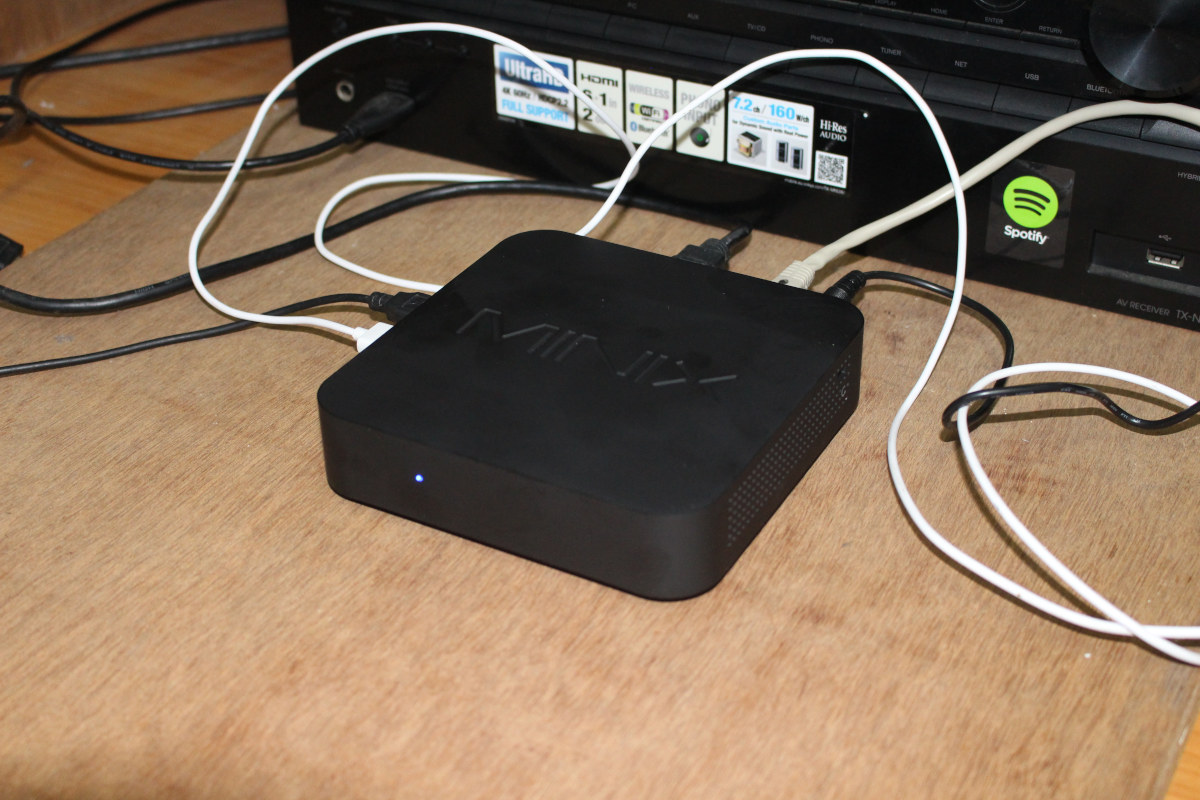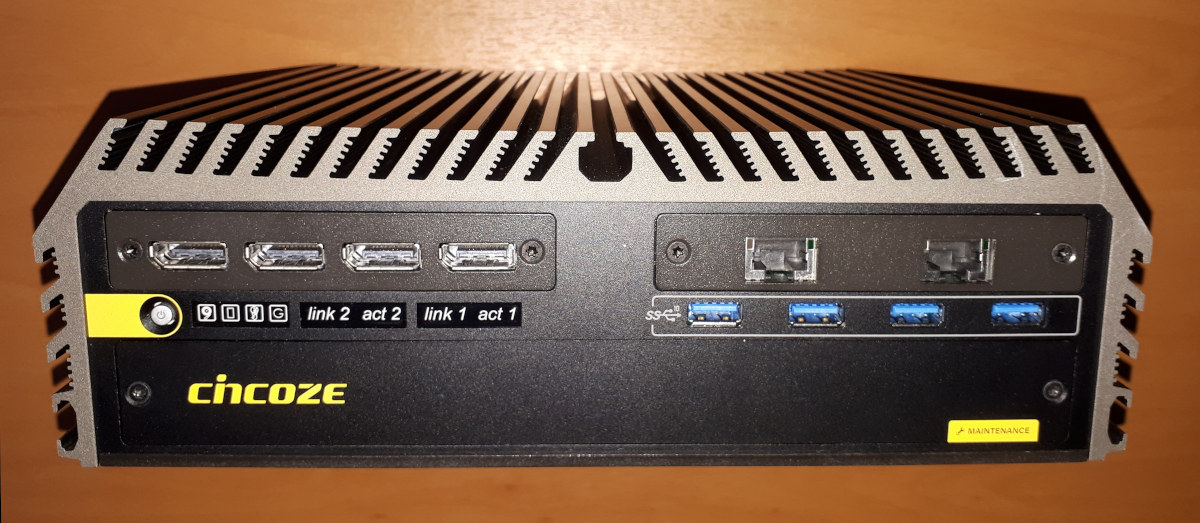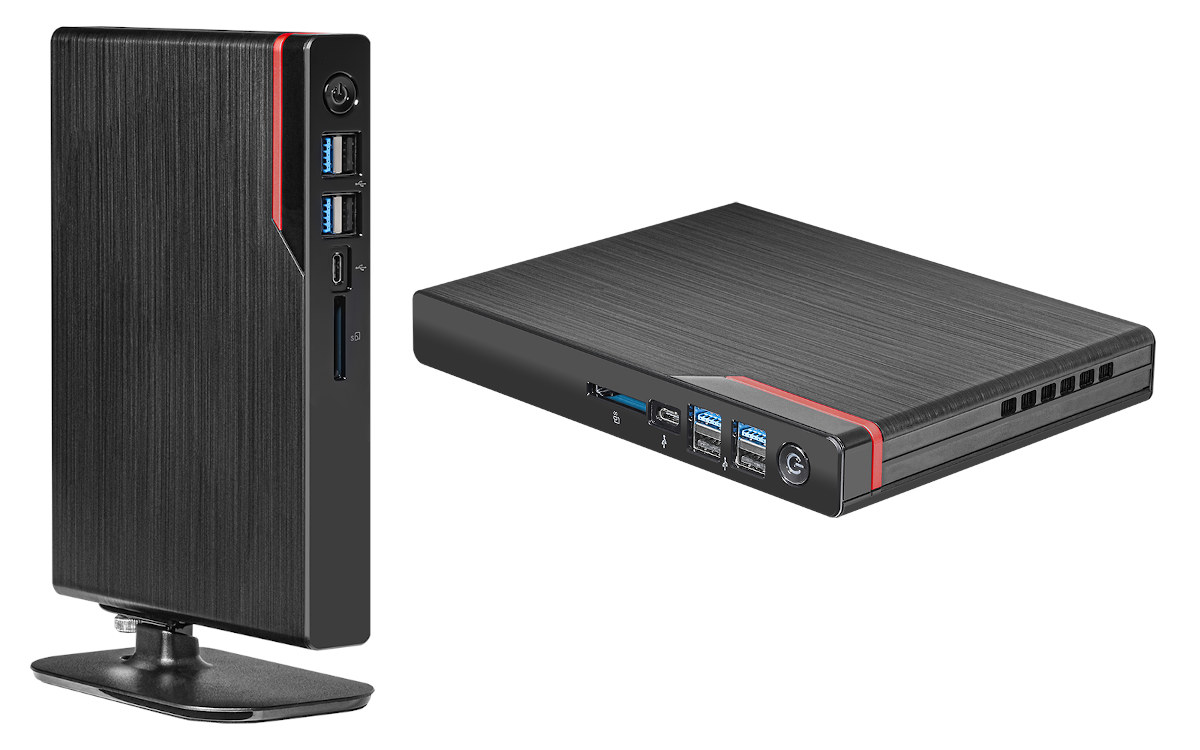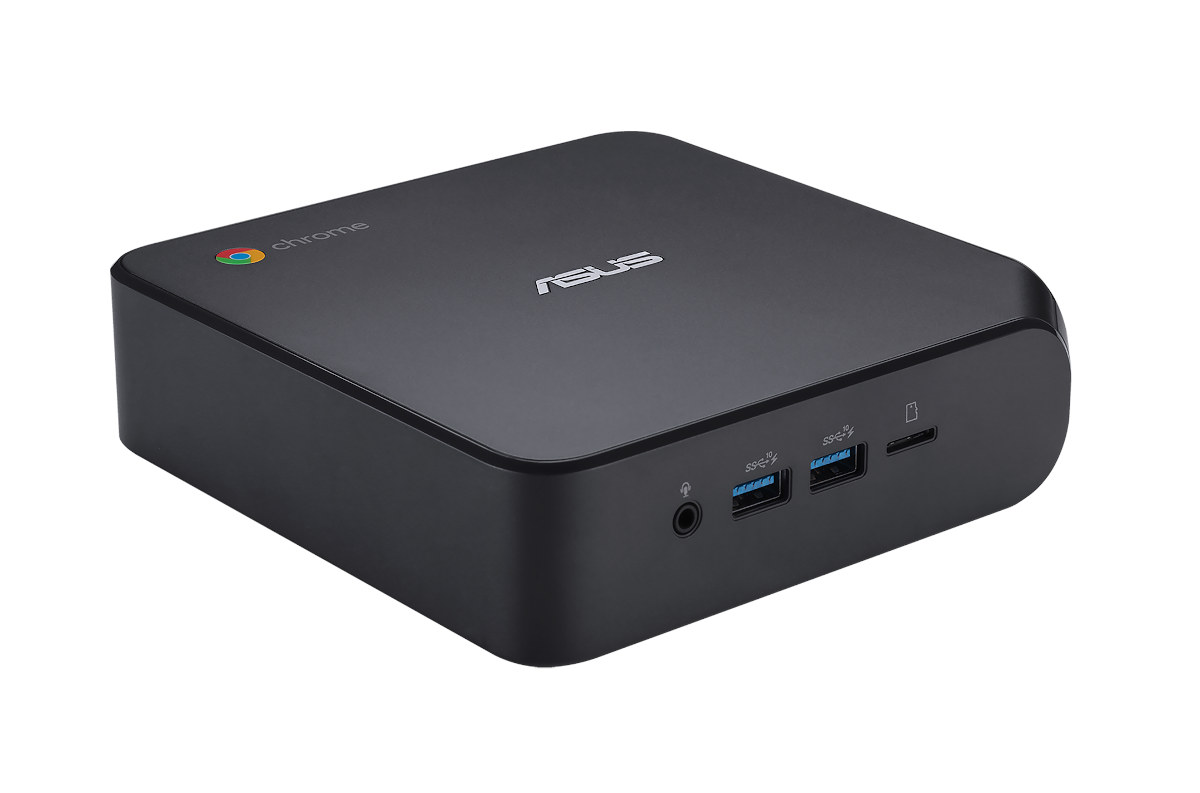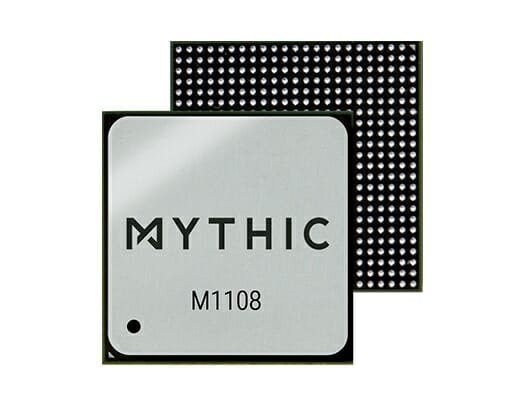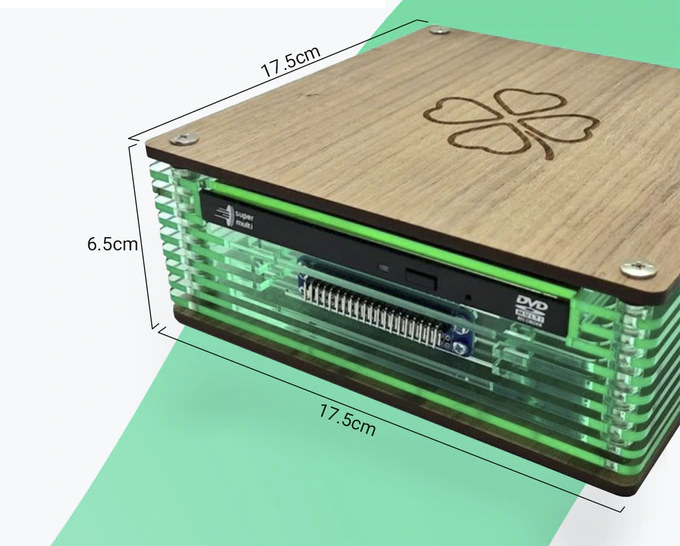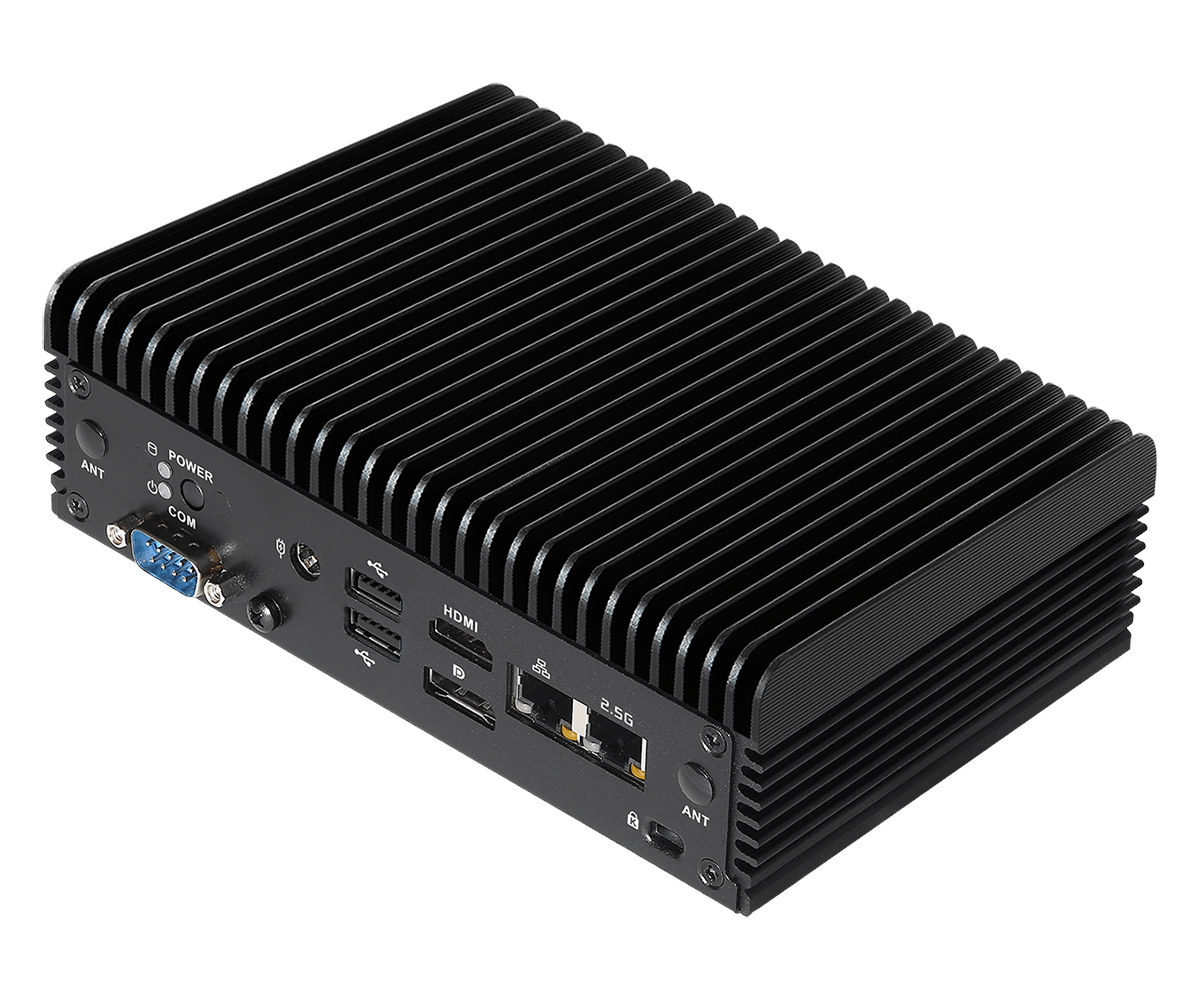Right before Christmas, I posted a review of MINIX NEO J50C-4 Max mini PC powered by an Intel Pentium J5005 Gemini Lake processor coupled with 8GB RAM and a 240GB SSD. It’s basically the same as the previously reviewed MINIX NEO J50C-4 except for the extra memory and faster & higher capacity SSD storage. MINIX asked me if I could do a giveaway of three units on CNX Software after the review, and I thought it would be a good idea so here we are. I wanted to complete the review before launching the giveaway and tested MINIX NEO J50C-4 Max with the pre-installed Windows 10 Pro. I worked just as well as the previous model with no CPU throttling and the performance one should expect from a Gemini Lake processor, but you may want to add an extra 8GB memory stick to take advantage of the higher bandwidth provided […]
Cincoze GM-1000 Embedded GPU Computer Review
Cincoze GM-1000 is an industrial embedded GPU computer. It is highly expandable including supporting an embedded MXM GPU. As a rugged computer, it can either be passively cooled or actively cooled with add-on fans. It can support an operating temperature ranging from -40°C – 70°C and is also able to survive being dropped or hit with a vibration/shock tolerance of 5G/50G. It is marketed as having all the features required for a compact, reliable, and high-performance computing system for field applications in machine vision, image processing, and artificial intelligence. In this review, I’ll cover some performance metrics from both Windows and Ubuntu and also discuss the thermals. Hardware Overview The model loaned by Cincoze for review came with an Intel Core i7-9700TE which is an eight-core 8-thread 1.80 GHz Coffee Lake-R processor boosting to 3.80 GHz with Intel’s UHD Graphics 630. It also came with an NVIDIA Quadro Embedded P2000 […]
ASRock Mars 4000U could be the world’s thinnest AMD Ryzen 4000 mini PC
We’ve already written about AMD Ryzen 7 4800 mini PC‘s such as ASROCK 4×4 BOX-4800, but if you’d like something slimmer with the processor, nothing beats the company’s Mars 4000U series mini PCs with a 26mm height. Despite its slim body, the mini PC packs up a lot of processing power and features, with up to an AMD Ryzen 7 4800 processor, up to 64GB RAM, support for a 2.5-inch SATA drive and M.2 NVMe/SATA SSD, as well as HDMI and VGA video outputs and more. ASRock Mars 4000U mini PC specifications: SoC Mars 4300U model – AMD Ryzen 3 4300U quad-core processor up to 3.7GHz with 6MB cache, 5-core Radeon graphics; 15W TDP Mars 4500U model – AMD Ryzen 5 4500U hexa-core processor up to 4.0GHz with 11MB cache, 6-core Radeon graphics; 15W TDP Mars 4800U model – AMD Ryzen 7 4800U octa-core/16-thread processor up to 4.2GHz with 12MB […]
ASUS Chromebox 4 features Intel Comet Lake processor, WiFi 6, up to 16GB RAM
Chrome OS devices, be it Chromebook laptops, Chomebox mini PCs, or Chromebit PC sticks, used to be relatively low-cost devices designed to run the Chrome browser. But over the years. the versatility of the platform has increased with more powerful, yet still with low-power consumption, hardware, and improved software with support for Android apps, the Google Play Store, and even Linux programs. ASUS Chromebox 4 mini PC should be able to handle all those tasks pretty well, thanks to a choice of Intel Comet Lake processors ranging from a dual-core Intel Celeron 5205U to a quad-core Core i7-10510U with up to 16GB RAM, 64GB eMMC flash, and an M.2 socket that will be fitted to either 128GB or 256GB SATA SSD. The device offers Gigabit Ethernet and WiFi 6 connectivity, also has the ability to drive up to three displays thanks to two HDMI 2.0 ports, and a USB 3.2 […]
M1108 AI accelerator chip delivers up to 35 TOPS for high-end edge AI applications
Last week, Mythic announced a breakthrough with compute-in-memory technology based on a 40 nm process with what the company claims to be the industry’s first Analog Matrix Processor. The M1108 AMP AI accelerator chip targets high-end edge AI applications including smart home, AR/VR, drones, and is said to set a benchmark in the industry for high performance and low power in a single cost-effective device, also available in M.2 and PCIe form factors. The M1108 comes with an array of flash cells, ADCs, a 32-bit RISC-V nano-processor, a SIMD vector engine, SRAM, and a high-throughput Network-on-Chip (NOC) router. With 108 AMP tiles, the M1108 provides up to 35 Trillion-Operations-per-Second (TOPS) enabling ResNet-50 at up to 870 fps. This enables a power-efficient execution of complex AI models such as ResNet-50, YOLOv3, and OpenPose Body25. The industry leader NVIDIA also has a similar AI accelerator chip NVIDIA Xavier AGX which delivers up […]
Black Friday 2020 International Deals and Coupons
Singles Day 2020 is now behind us, but just like every year, international Black Friday and Cyber Monday deals and coupons are coming, and even already launched over one week before the actual events. And CNX Software will link to promotions from Chinese online websites that offer such deals with Aliexpress, Banggood, GearBest, GeekBuying, and others. Aliexpress Black Friday Fest will start on November 23, 12:00 AM PT, and last till November 27, 11:59 PM PT with up to 70% discounts. But you can also browse the website to find discounts, and add products to your cart before ordering during the event. There will also be $20 and $40 coupons for orders over $40 and $100 respectively, but conditions are unclear at this time. Banggood’s Crazy Friday event takes place during an even longer period between November 2nd and December 6th. There are special sitewide coupons for PayPal payments with […]
Rock Pi 4B or Raspberry Pi 4 based mini PC runs RISC OS Cloverleaf (Crowdfunding)
First released in 1987 by Acorn Computer Ltd, RISC OS was the first operating system designed to run on ARM processors, and specifically on the company’s Archimedes personal computer. I don’t think I had ever heard about the operating systems until it was ported to the Raspberry Pi SBC by RISC OS Open Ltd (aka ROOL) who manage the publication of RISC OS source code. But there’s also a separate project called RISC OS Cloverleaf which aims to further develop the open-source operating systems, and just launched a Kickstarter campaign to fund software development, and they also offer two mini PCs running RISC OS Cloverleaf with namely Cloverleaf Puma powered by a Rock Pi 4B SBC, and Cloverleaf Kitten featuring a Raspberry Pi 4 board. Cloverleaf Puma / Kitten key features and specifications: SBC Cloverleaf Kitten – Raspberry Pi 4 with Broadcom BCM2711 SoC, 4GB DDR4 RAM Cloverleaf Puma – […]
ASRock iBOX-V2000 mini PC integrates an AMD Ryzen Embedded V2000 SBC
AMD officially announced AMD Ryzen Embedded V2000 Zen2 processor family yesterday, with claims of twice the multi-threaded performance-per-watt, up to 30 percent better single-thread CPU performance, and up to 40 percent better graphics performance over Ryzen Embedded V1000 processors. We’ve already covered ADLINK cExpress-AR COM Express module featuring the new AMD embedded processor, but we should expect more Ryzen V2000 hardware announcements over the next few days and weeks, and ASRock Industrial has announced the iBOX-V2000 fanless mini PC with lower power parts, namely Ryzen Embedded V2516 & V2718, and targets embedded, industrial, and Edge applications such as retail, automation, automotive, entertainment, and smart cities. IBOX-V2000 mini PC comes in two variants IBOX-V2000M and IBOX-V2000V with the following specifications: SoC IBOX-V2000V – AMD Ryzen Embedded V2516 hexa-core/12-thread processor @ up to 2.1 GHz / 3.95 GHz (Turbo) with 6 CUs Radeon RX Vega 6 GPU; 10-25W TDP IBOX-V2000M – AMD […]


